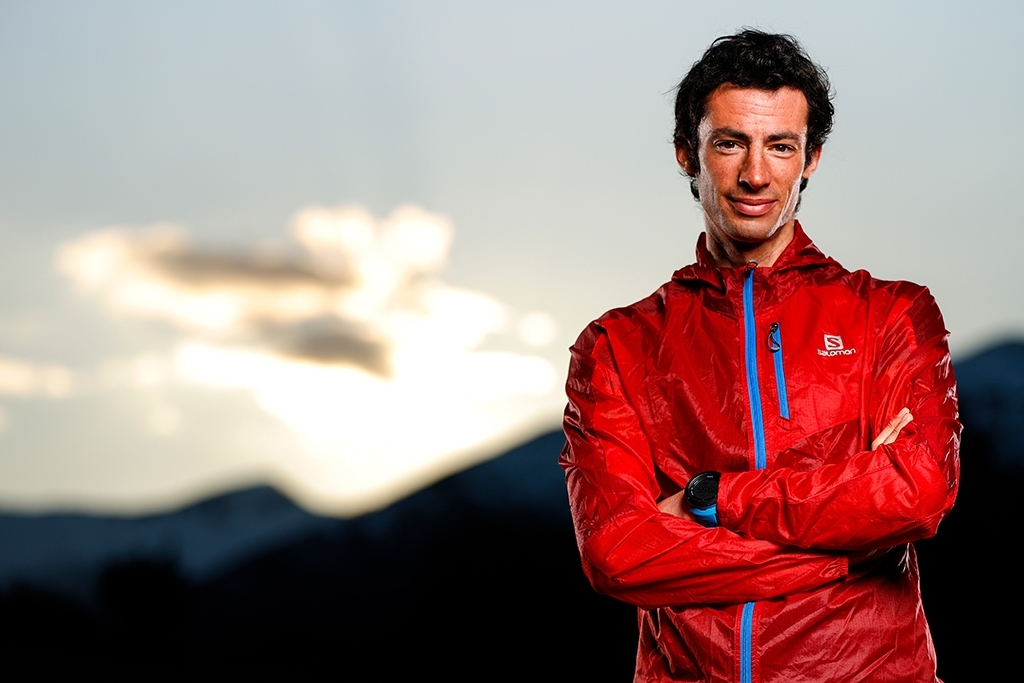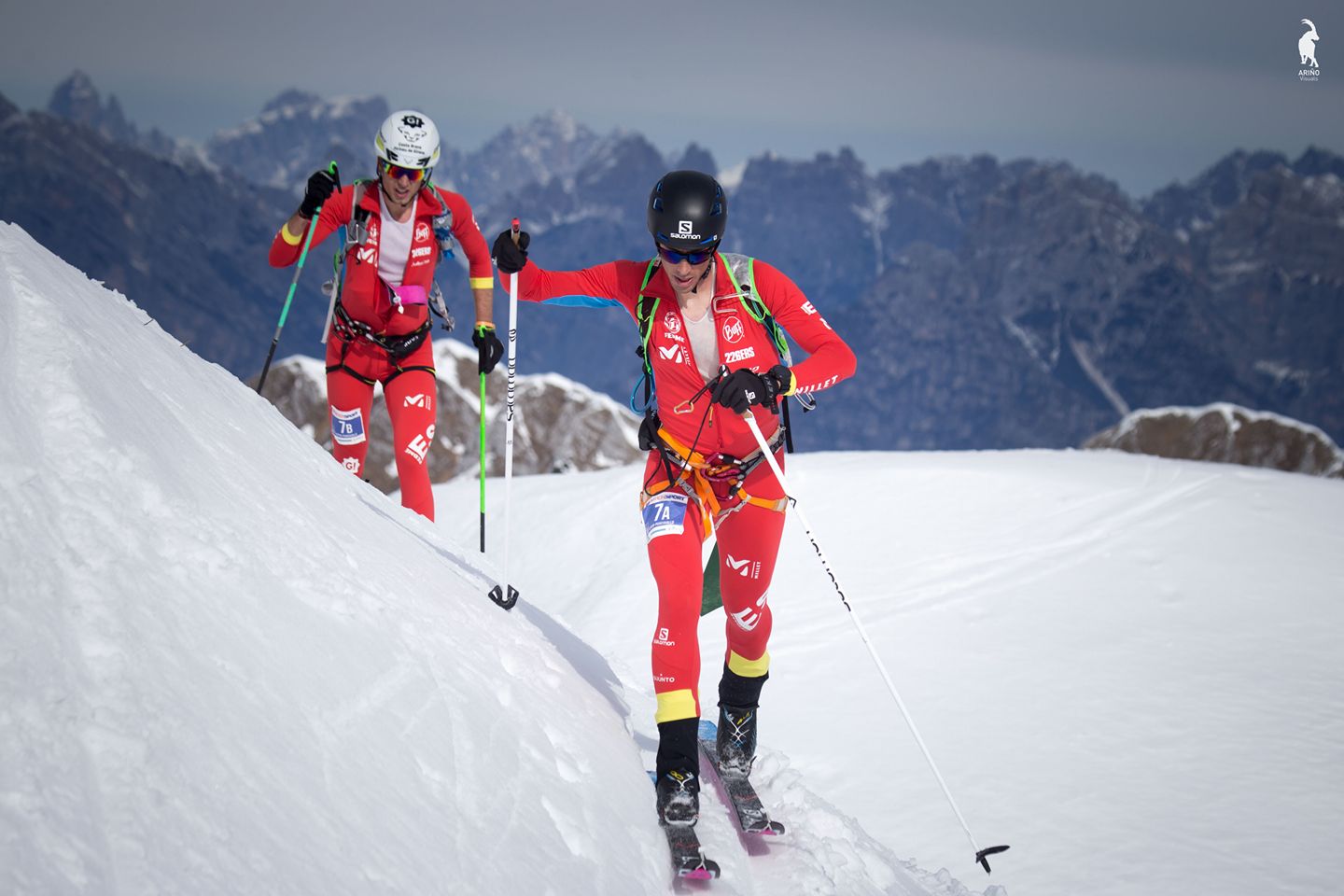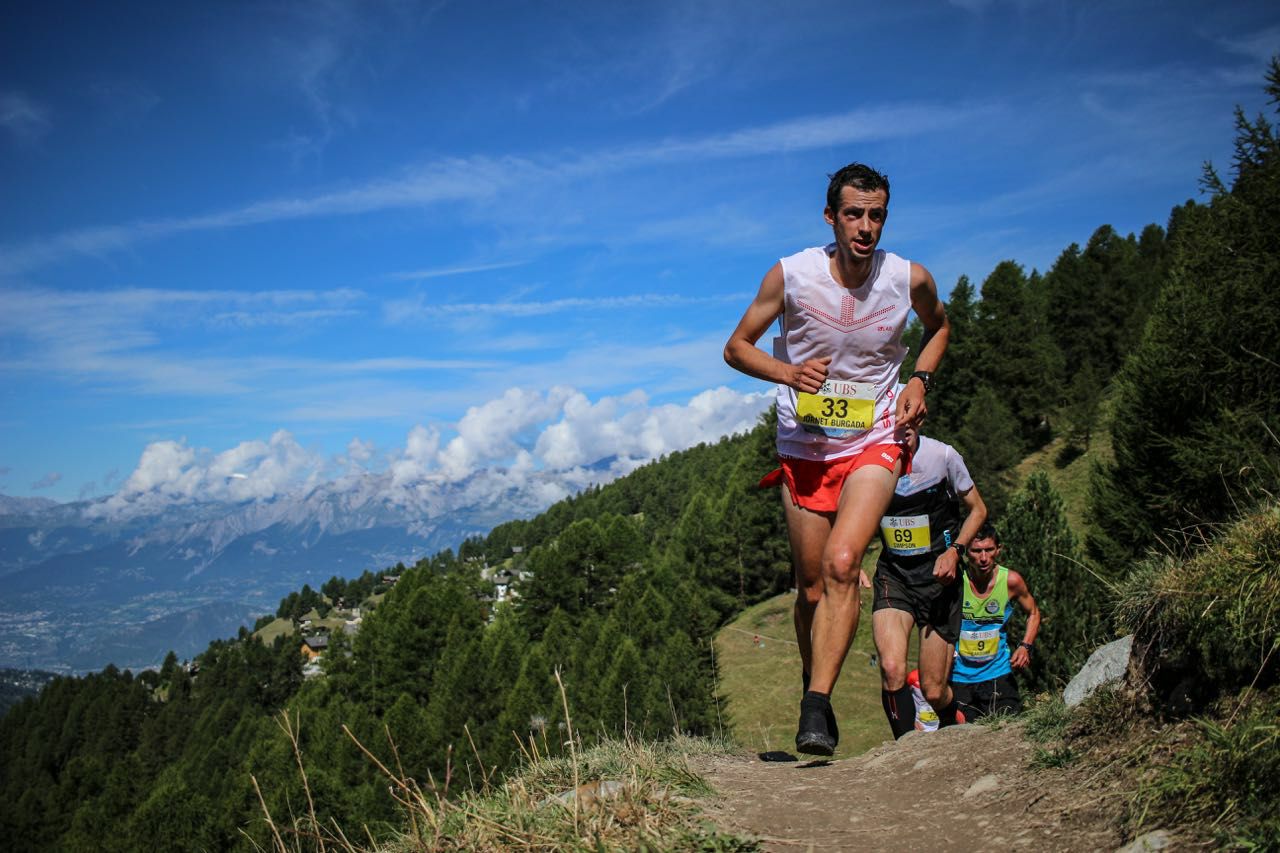“Hi, my name is Kilian Jornet, I’m thirty years old and I’ve been training for thirty years”. These are the words with which Spanish Kilian Jornet (30) describes himself in a sponsoring video. Kilian is one of the best (if not THE best) ultra athletes in the world. Learn more about the life, the training and the convictions of this exceptional athlete.
Kilian Jornet has a seemingly superhuman performance capacity, which has already led to many records on his part. His maximum oxygen uptake capacity (VO2max), for example, is 85-90ml/kg/min – an outstanding value. With ski mountaineering and trail running he dominates two sports at the same time. While others may be faster over specific distances, his main qualities are his extreme endurance and versatility. One could describe him as an athlete, as a sportsman, as a runner, as a ski mountaineer, as a nomad or as an adventurer – Kilian himself prefers the simple title of a “lover of the mountains”. But how did he become the outstanding ultra athlete he is today? What do his training routines look like and what does he do apart from sports?

Picture: runners.es
Some facts:
Personal: Birthday: 27.10.1987, Place of residence: near Åndalsnes (NOR)
Anatomy: Height: 171 cm, Weight: 58-59 kg, Fat share: 8.72 %, Muscle share: 46.1 %, Bone share: 21.0 %
Performance diagnostics: Maximum heart rate: 205, Resting heart rate: 35, Lung capacity: 5.3 l
Background
Kilian Jornet grew up in the Ski resort Refugio de montaña de Cap del Rec in the Catalan Pyrenees. As a consequence, him and his sister spent a lot of time on sports already as children, since opportunities for other kinds of activities were limited. In summer, as soon as they came home from school, the two siblings would run around in the forests and the mountains surrounding the resort and they would do the same thing on skis during winter. Kilian’s parents, both of which are enthusiastic mountaineers, would take their kids on tours to the mountains on a regular basis. That way, he says, he startet internalising the love for sports and the mountains at a very young age, without being aware of it.
When Kilian was 13 years old, he discovered that his school had a training centre for ski mountaineering. He decided to apply for it and he was accepted directly. This is where he started to get to know and to love sports from the side of competition. He started with regular, goal-driven training and he soon participated in his first Spanish championships and European championships, followed by first successes. Since ski mountaineers often take part in trail running competitions during summer, in order to stay in shape, Kilian soon took up trail running as well. Today, he competes in ski mountaineering during winter and in trail running during summer.
However, it is not always easy to be a representative of a fringe sport. Kilian is aware of this fact and he stresses how important it is to have the necessary support in ones own environment. During his school time, it was his mother who woke him and his sister before school to go on a tour together. Also for competitions he depended on his parents, who would accompany him.
Despite the large amount of time spent on sports already at a young age, Kilian went to a regular school and he also studied at university. When in 2005/2006 he received his Bachelor’s degree, he decided to definitely go for a sports career. However, in order to have a plan B ready, he continued his studies, namely at the French University of Font Romeu. He studied STAPS (Sciences and Techniques of Sports and Physical Activities), where he could integrate some of his training into classes. Furthermore, he profited from a special programme for elite athletes, which allowed him to invest the necessary time in his career. Today, he is a full professional, supported by sponsors and instititions. Apart from him, however, almost no mountain sports people have the possibility to make a living with sports.
Training
“Don’t professional sports people have way too much time?”, one might aske oneself. When looking at how much Kilian trains, you soon realise that this is not the case for him. He train up to 35 hours during some periods. Normally, he does a longer session in the morning (3-4 hours) and a shorter one in the afternoon (1-2 hours). During competition season, the amount can “drop” down to 15 hours. In total per year, Kilian trains up to 1000 hours, including 550’000 metres of climb, half of which taken on skis and half of which by foot. Rest days are nothing for Kilian. He trains 7 days a week 365 days a year. In the course of a year, Kilian collects an astonishing amount of kilometres: 7’000km of running, 6’000 on skis, 1’000 on the bike, 50’000km by car and inumerous (“way too much”, he says) by aeroplane. Earlier, he had a coach, but since a couple of years ago, he has been his own coach. He states that he hasn’t found any coach who supports his training methods, but that, since his methods seem to work, he doesn’t feel the need to hire any either.
Competitions
Competitions in winter, in tendency, are shorter than the ones during summer. However, Kilian doesn’t prefer any of the two sports over the other and he values the fact that they combine very nicely. The shorter competitions in winter (all from 1km short, extremely steep distances to competitions over 90min help him to get some speed for competitions in summer, while the ones in summer lay perfect foundations for the winter season. Also, he can avoid putting too one-sided stress on his body. Especially the competitions in winter can be very tough. The many metres of climb (most of which taken at a high altitude), which have to be overcome, really require all accessible energy of the athlets. Kilian had to realise that himself rather painfully, when in a competition over 100km in 2010, he had to manage the last 30km completely dehydrated and tortured by cramps. Despite the troubles, he made it to the finish, on 3rd place. According to him, the overwhealming emotions you get from arriving at the finish make you forget about all the suffering.

Picture: Ariño Visuals
If you hear about the incredible stress which Kilian’s body has to tolerate on a regular basis, one may assume that injuries are a daily business, too. However, a fracture of the patella in 2006 and a recent operation of the shoulder were the only two serious injuries Kilian had to suffer from. He says himself that he has been very lucky with his body and with having been injured only a very few times.
How does Kilian manage to motivate himself during such intense performances? When he is really close to hitting the wall, what does he think about? During long competitions, running turns into some kind of automatism, just like breathing, he says. One distracts oneself with the joy of competing, with enjoying the scenery or even with music sometimes. Kilian often thinks about what he would be having to do at this moment if he was at home or if he was working. And when it gets really tough, he sets himself some intermediate goals. “Only this one little hill now”, he tells himself, for example. That way, he is able to always celebrate some small victories on the way, which motivate him to give all he has got all the way into the finish. When he is really exhausted, however, it can happen that he is incapable of even thinking anything and that he only keeps moving forward in some kind of trance-like state.

Picture: Philipp Reiter, Salomon Running
Ultra competitions are thus to a large extent a psychological challenge. Kilian does not work with a professional psychologist, but he uses visulisation techniques and tries to go through the whole race in his mind beforehand (handling of other competitiors, refreshments, etc). During a competition, he says, it is utterly important to think rational and positive in order to handle potential unforeseen happenings, because they almost always do happen! The important thing, according to Kilian, is to have the appropriate reaction ready for such situations, which he can prepare by visualisation.
Kilian personally
If Kilian isn’t training for a change, you can find him reading a book in a quiet place by a mountain lake or relaxing at home. He can also relax when listen to music or drawing, he says. Being a lover of activity and movement, of course, he also has hobbies requiring movement, such as, for example, slack-lining or climbing.

Picture: Kilian Jornet official Facebook page
Kilian Jornet for sure is very disciplined and he knows what he wants to achieve. However, his biggest strength seems to be his unlimited love for what he does. He keeps stressing the importance of having fun and of enjoying what one does. That it is not primarily about success, but about personal fulfillment. This is also revealed in his attitude towards doping. Doping is a problem, he says, but it is not caused by money only, but mainly by wrong goals on part of the sports people. A lot of them see only the goal and they do not care a lot about the way there, Kilian claims. In his opinion, under these circumstances, doping seems like a suitable solution in order to arrive at these goals as fast as possible.
What Kilian likes especially about his life, though, is the connection with nature, which is unique in the mountains. His advice to people who want to take up ski mounainteering or trail running is thus to see the sport as an experience, as an adventure, and to take step by step, enjoying the way. It is not necessery and neither is it possible to go from 0 straight to 100, he warns. Kilian’ss main message is thus: “enjoy what you are doing and listen to your body!”.
It is easy to believe him. It is hard to imagine that someone who is ready to take such suffering and pain on a regular basis would do this for other reasons than pure love for the sport.
This entry was written by: Marion Aebi


One reply on “Kilian Jornet: an exceptional athlete”
[…] can read more about Kilian Jornet in the running.COACH blog post from […]